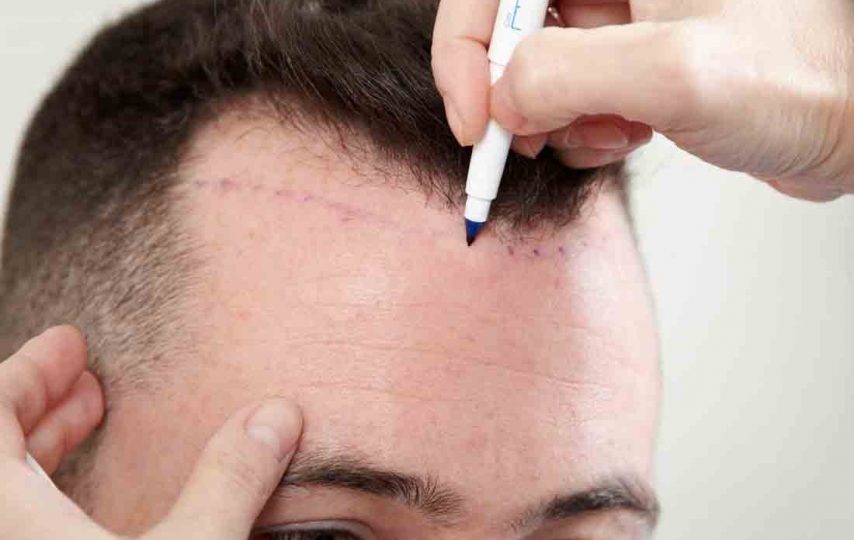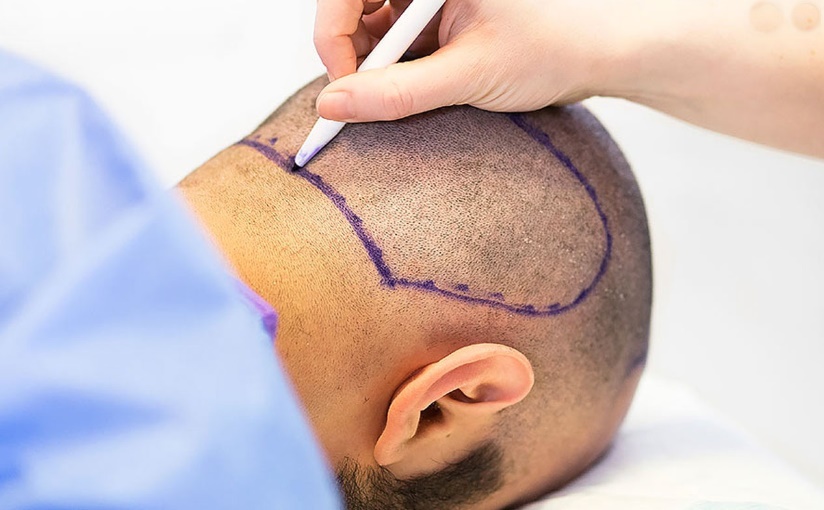Are you one of those people struggling with hair loss and desperately seeking a solution? Are you searching for the perfect natural hairline technique that will give you the confidence to flaunt your locks again? Look no further, as we dive into two of the most popular and effective techniques in the market – DHI vs FUE. Don’t let hair loss dampen your spirit; read on to find out which method is best suited to your needs!
Table of Contents
Introduction to DHI vs FUE Hair Line Techniques
If you’re considering a hair transplant, you may be wondering what the difference is between DHI and FUE hairline techniques. Both procedures involve taking hair follicles from one area of the head and transplanted to another, but there are some key differences to consider.
DHI, or Direct Hair Implantation, involves using a special tool to directly implant the follicles into the desired area. This can provide more control over the placement of the follicles and result in a more natural-looking hairline. However, it is a more invasive procedure and takes longer to heal.
FUE, or Follicular Unit Extraction, is a less invasive procedure where follicles are extracted one by one from the donor area. This can be less time-consuming and have a shorter recovery period, but it can be more difficult to achieve a natural-looking result with this method.
Both DHI and FUE have their pros and cons, so it’s important to consult with a hair transplant specialist to see which option is right for you.
What is Choi Pen and How Does it Work?
Choi pen is a tool that helps to naturally line the hair. It consists of two main parts: the handle and the comb. The handle is used to hold the pen while the comb is used to help guide the pen along the hairline.
The Choi pen works by using a small, round brush to help apply pressure along the hairline. This helps to create a natural-looking line that can be followed when trimming or styling the hair.
Benefits of DHI vs FUE Hair Line Techniques
The debate between DHI and FUE hair line techniques is one that has been going on for some time. Both have their supporters and both have their detractors. So, which one is right for you? Here, we’ll take a look at the benefits of each technique to help you decide.
DHI:
Pros:
-The natural hairline is preserved because the donor area is not shaved.
-There is no linear scar.
-Healing time is shorter because the wounds are smaller.
-It is less invasive than FUT.
-Faster procedure with fewer sessions needed.
Cons:
-More expensive than FUE.
-Requires special equipment that not all clinics have.
Pros and Cons of Each Technique
There are a few key differences between the two main types of natural hairline transplantation techniques: FUE and DHI. To help you make the best decision for your needs, let’s take a look at the pros and cons of each technique.
FUE (follicular unit extraction) is a minimally invasive surgical procedure that involves extracting individual hair follicles from the donor area (usually the back of the head) and transplanted them to the recipient area. This technique is less invasive than traditional strip surgery (FUT), leaving no linear scar. FUE can be performed in one long session or multiple smaller sessions, depending on the amount of hair being transplanted. One of the main advantages of FUE is that it allows for a quicker recovery time since there is no large incision needed as with FUT. Additionally, FUE can be used to harvest finer hairs which are ideal for creating a natural-looking hairline.
DHI (direct hair implantation) is another popular technique for natural hairline restoration. This method also involves taking individual hairs from the donor area but instead of placing them in tiny incisions made in the recipient area, they are placed into special implanters which are then inserted into those same incisions. This technique allows for greater precision when placing each graft and also causes less trauma to both the donor and recipient areas since no stitches are required. Additionally, DHI offers a shorter recovery period than FUT surgery and
Cost Comparison between DHI and FUE Hair Line Techniques
There are a few key factors to consider when comparing the cost of DHI vs FUE hairline techniques. First, DHI is typically more expensive than FUE because it requires special equipment and training. Second, the number of grafts needed for DHI may be higher than for FUE, meaning that more hairs will be transplanted overall and the cost will be higher. Finally, DHI may require more than one session to achieve desired results, while FUE can usually be completed in a single session.
Assuming all other factors are equal, we can compare the approximate cost of each technique by looking at the average price per graft. For DHI, the average price per graft is $5-10. For FUE, the average price per graft is $3-8. This means that, on average, DHI will cost you $500-1000 more than FUE.
Of course, there are many variables that can affect the final cost of either procedure. The best way to get an accurate estimate for your specific case is to consult with a qualified hair transplant surgeon.
Final Thoughts on Which Technique Is Right for You
As you can see, there are pros and cons to both DHI and FUE natural hairline techniques. It really comes down to what your specific goals are and what you are willing to put up with in terms of side effects. If you want the absolute best results with the least amount of pain and recovery time, then DHI is probably the way to go. However, if you are willing to sacrifice a little bit of results for a much quicker and easier recovery, then FUE might be the better option for you. Ultimately, the choice is yours!
Conclusion
When making the decision between DHI and FUE, it is important to consider your needs and goals. If you are looking for a natural-looking hairline with minimal scarring and downtime, then DHI might be right for you. However, if you are looking for a more precise procedure that allows for greater control over the end result, then FUE might be better suited to your needs. Whichever technique you choose, make sure that it is performed by an experienced professional who can ensure the highest quality results.


